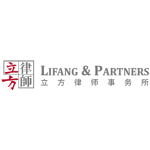In pursuant to Article 18 of Interpretation of Supreme People's Court (SPC) on ‘Several issues concerning the application of law in the hearing of civil cases involving trademark disputes’, the limitation for instituting trademark infringement is three years, commencing from the date when trademark owners know or should have known the infringement.
Where the lawsuit was brought after three years, and if the infringement is still continuing, the amount of damages for the infringement shall be calculated by counting back three years from the date when the trademark owner brought the lawsuit to the court.
This rule has established the basic principle of the timespan of damages calculated. However, the court may still award damages calculated for more than three years.
Chongqing People’s High Court issued a final judgment, i.e. (2021) Yu Minzhong No. 166 (2021渝民终166号), which confirmed trademark infringement of the defendant, and ordered the defendant to pay damages of RMB 10 million ($1.5 million) calculated back from 2005, until the filing date of the lawsuit, i.e. October 8 2018.
This lawsuit was filed by Chongqing Pigeon Brand Wire and Cable Limited (Pigeon Brand), against Chongqing Pigeon Emperor Wire and Cable Group Limited (Pigeon Emperor) and a distributor of the first defendant, for trademark infringement and unfair competition, requesting Pigeon Emperor to stop producing, selling and promoting the wire and cable bearing infringing mark “鸽皇(Pigeon Emperor)”, and change the tradename of Pigeon Emperor without inclusion of “鸽皇(Pigeon Emperor)” or “鸽牌(Pigeon Brand)”.
The main reason for such an unusual judgment is that while the plaintiff registered the trademark “鸽牌(Pigeon Brand)” in class 9 in 1981, the legal representative of the defendant also registered a similar trademark “鸽皇(Pigeon Emperor)” in the same class in 2005, and licensed the defendant to use the trademark, which was finally invalidated by the plaintiff until May 2018.
In pursuant to another judicial interpretation of SPC, no trademark infringement lawsuit could be brought against acts using a registered trademark, before the trademark was invalidated or cancelled.
The court therefore rejected the argument of the defendant that the lawsuit was brought after the time limit expiry of the lawsuit, as the plaintiff would have known the infringement acts before 2013, as the court held that the infringement acts continued until 2018, and the time limit did not expire.
The court further rejected the defendant’s argument for exclusion of calculation of damages from 2005–2018, as the defendant has been using the valid trademark. The court held that as the trademark “鸽皇(Pigeon Emperor)” was invalidated, and the trademark was void from the beginning, the defendant shall undertake liability during the interim. In addition, the court held that the defendant conducted infringing acts maliciously, since the date of its establishment. As a result, the court held that the calculation of damages shall be based on the profits of the defendant infringing acts during 2005–2018.
In conclusion, from this judgment, the court could award damages calculated more than three years back from the filing date, but from the start of infringing acts, based on the following conditions:
The plaintiff could not file a lawsuit earlier due to the defendant used registered trademarks;
The plaintiff successfully invalidated the registered trademarks used by the defendant;
The plaintiff filed trademark infringement lawsuit within three years after invalidation of the above registered trademarks;
The defendant used the above registered trademark maliciously to imitate the plaintiff’s trademark or tradename.
The trademark owners should bear in mind, that if the above conditions are met, the court could award high damages based on a longer timespan, and may even apply punitive damages against the defendant, the plaintiff could obtain more compensation than ordinary cases.
Yan Zhang
Partner, Lifang & Partners
Lin Mu
Senior attorney-at-law, Lifang & Partners












